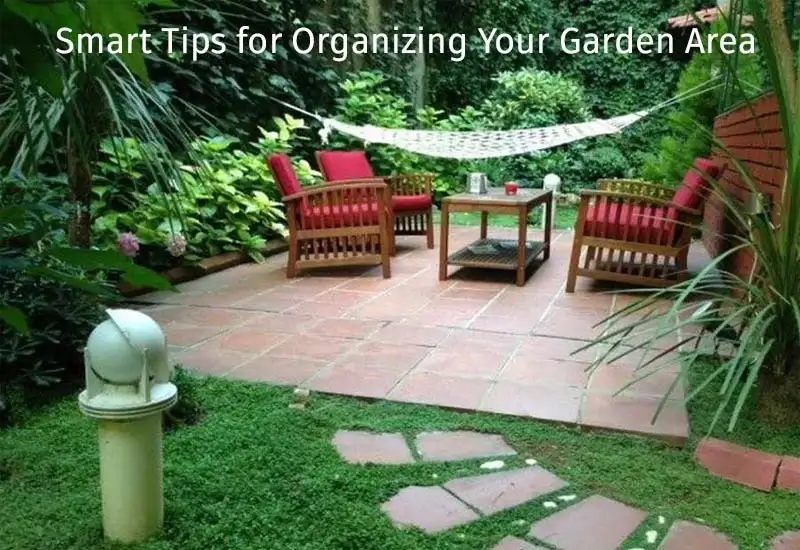15 Smart Tips for Organizing Your Garden Area
Organizing a garden area is essential for maintaining a visually appealing outdoor space, optimizing plant growth, and creating a relaxing environment. Whether you have a small balcony garden or a sprawling backyard, here are 15 smart tips to help you organize your garden area effectively.
Plan Your Layout:
· Research the plants suitable for your region’s climate and soil type.
· Observe the sunlight patterns in your garden area throughout the day.
· Create a rough sketch of your garden layout, considering the positioning of plants, pathways, and seating areas.
Design Zones:
· Identify different functional zones, such as a flower bed, vegetable patch, herb garden, and relaxation area.
· Demarcate each zone using pathways, borders, or elevation changes.
Use Vertical Space:
· Install trellises, arbors, or pergolas for climbing plants like vines, cucumbers, or beans.
· Hang hanging baskets or wall-mounted planters for flowers, herbs, or trailing plants.
Choose Appropriate Plants:
· Research plants that thrive in your local climate, considering factors like temperature, humidity,
· and rainfall.
· Consider the mature size of plants to ensure they fit comfortably in your garden without overcrowding.
Group Plants by Needs:
· Separate plants based on their water, sunlight, and soil requirements.
· This grouping allows efficient watering and fertilizing while preventing over/under-caring for specific plants.
Use Raised Beds:
· Construct raised beds using materials like wood, stone, or bricks.
· Fill raised beds with nutrient-rich soil to provide optimal plant growth conditions.
Mulch for Weed Control:
· Apply a layer of organic mulch like wood chips, straw, or leaves around plants.
· Mulch prevents weeds, conserves soil moisture, and moderates soil temperature.
Install Pathways:
· Design clear and easily accessible pathways using materials that match your garden’s style.
· Ensure pathways are wide enough for comfortable walking and wheelbarrow access.
Organize Tools and Supplies:
· Designate a space for gardening tools, equipment, and supplies.
· Install hooks, shelves, or a toolshed to keep everything organized and easily accessible.
Implement a Watering System:
· Set up a drip irrigation system to deliver water directly to plant roots.
· Use soaker hoses for even and efficient watering, minimizing water wastage.
Add Seating:
· Integrate seating areas near focal points or in shaded spots.
· Choose weather-resistant furniture that complements your garden’s aesthetic.
Create Focal Points:
· Position eye-catching elements like decorative pots, sculptures, or water features.
· Focal points add visual interest and serve as conversation starters.
Label Plants:
· Use plant labels or markers made of materials like wood or metal.
· Labeling helps you identify plants and remember their care requirements.
Regular Maintenance:
· Schedule routine weeding, deadheading, and pruning sessions to keep plants healthy.
· Regular maintenance prevents overgrowth and maintains the garden’s tidy appearance.
Rotate Crops:
· In a vegetable garden, practice crop rotation annually to prevent soil depletion and disease buildup.
· Rotate plants within different sections of the garden to ensure balanced nutrient usage.
Conclusion
By incorporating these tips into your gardening routine, you can create a well-structured and visually appealing garden area that thrives with healthy plants and provides a welcoming space for relaxation and enjoyment. Remember that gardening is a creative and dynamic process, so don’t hesitate to adapt these tips to suit your specific garden’s needs and your personal preferences.







